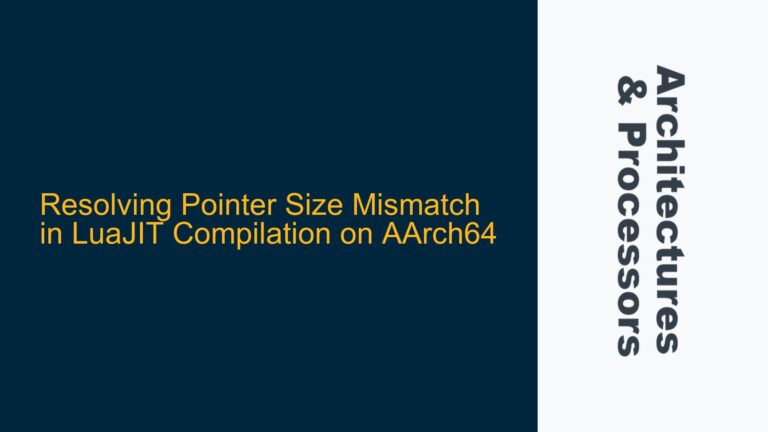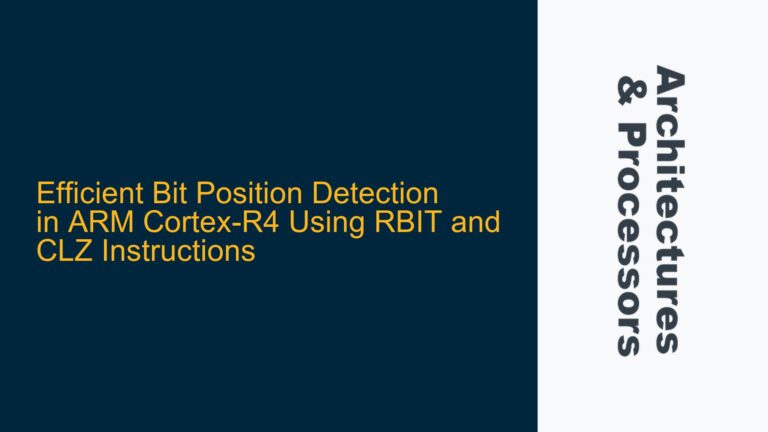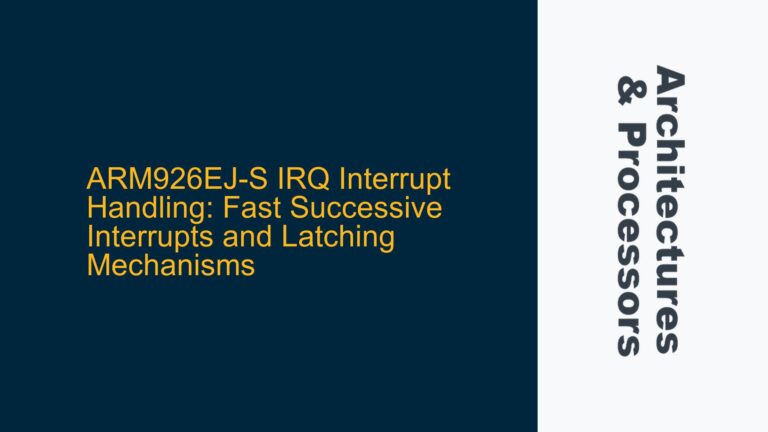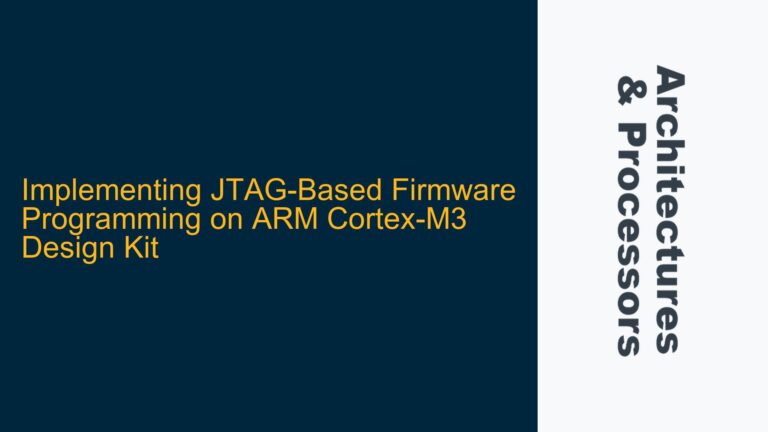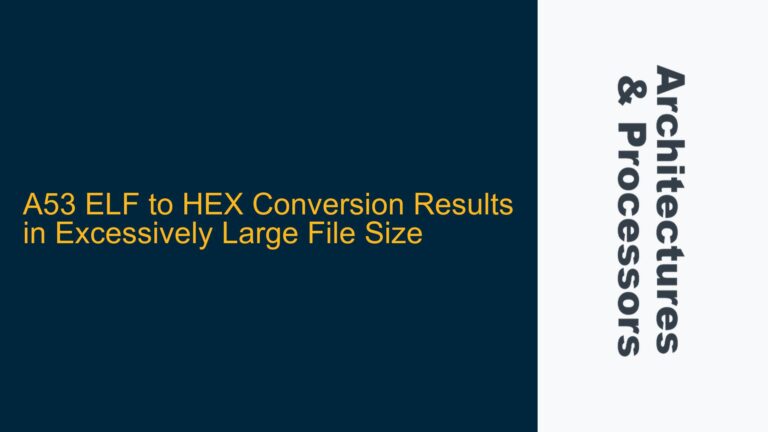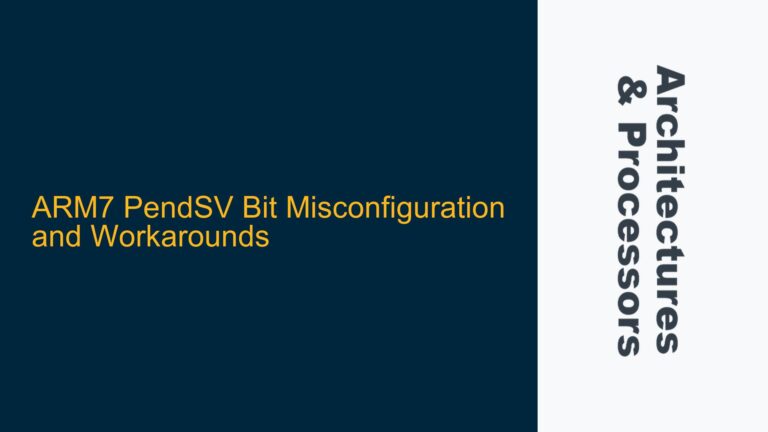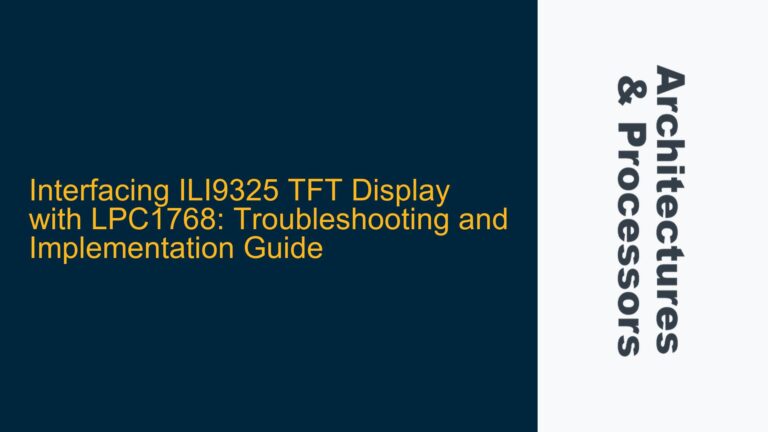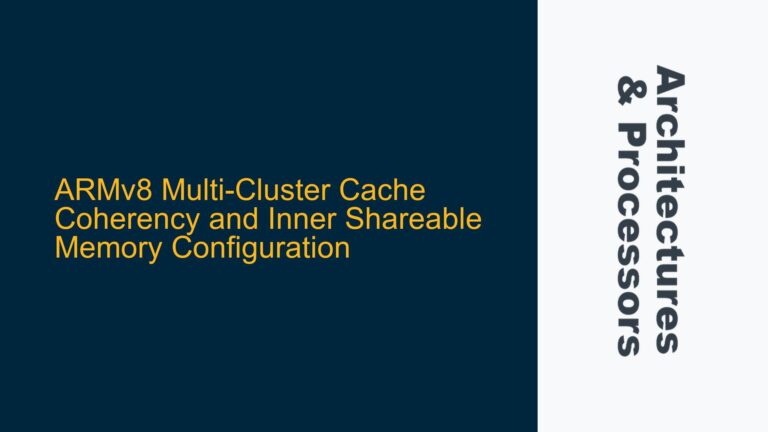Resolving Pointer Size Mismatch in LuaJIT Compilation on AArch64
ARM AArch64 LuaJIT Compilation Error: Pointer Size Mismatch When attempting to compile LuaJIT on an AArch64 platform, a common issue that arises is a pointer size mismatch error. This error typically manifests during the build process, specifically when generating the lj_vm.s file. The error message indicates a discrepancy between the pointer sizes expected by the…
